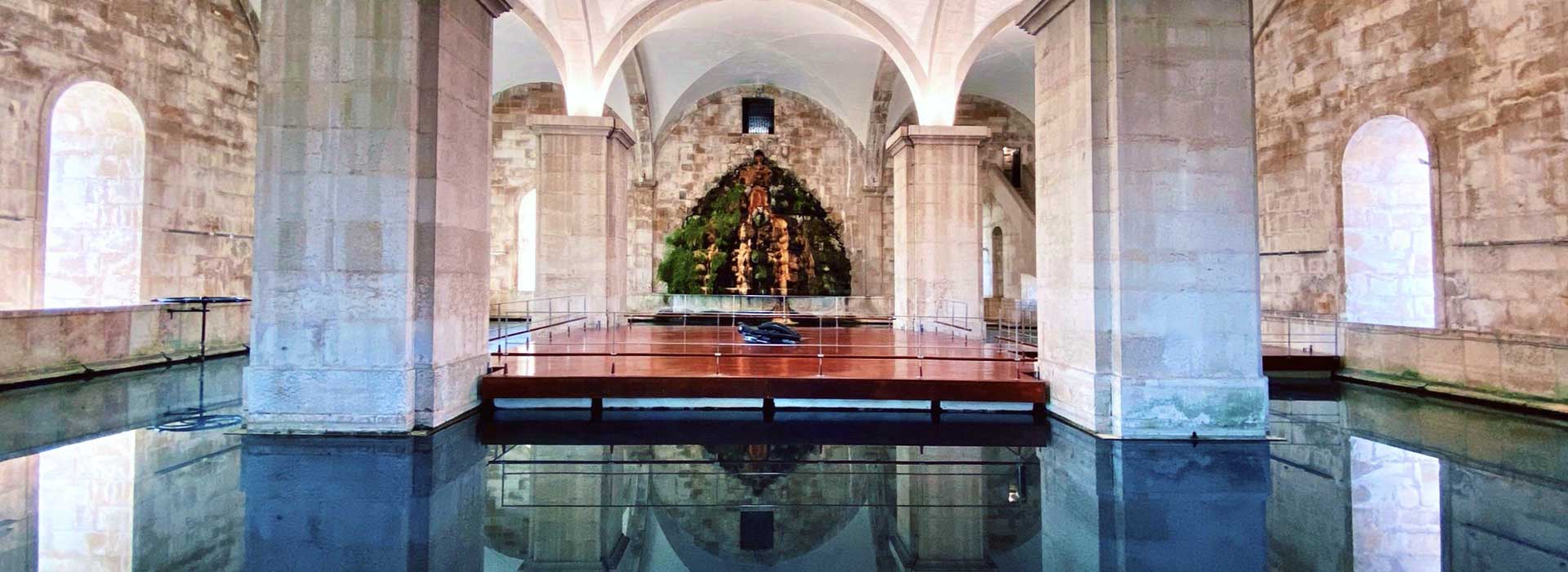
Water Museum
The Water Museum Consortium in Lisbon stands as a testament to the city's rich aquatic history and its innovative approach to water management. Founded with the aim of preserving and showcasing Lisbon's water heritage, the consortium comprises various sites, each offering unique insights into the city's relationship with water. Among its highlights is the Águas Livres Aqueduct, an engineering marvel from the 18th century that supplied water to the city. Visitors can marvel at its towering arches and learn about the significance of water infrastructure in Lisbon's development.
Another prominent site within the consortium is the Water Museum, housed in the former Mother of Water Reservoir. Here, visitors can delve into the history of water supply and distribution in Lisbon through interactive exhibits and multimedia displays. Additionally, the consortium offers guided tours of underground galleries and reservoirs, providing a fascinating glimpse into the hidden world beneath the city's streets.
By exploring the Water Museum Consortium, visitors can gain a deeper understanding of Lisbon's cultural heritage and the vital role that water has played in shaping its identity.
Mãe d’Água das Amoreiras Reservoir
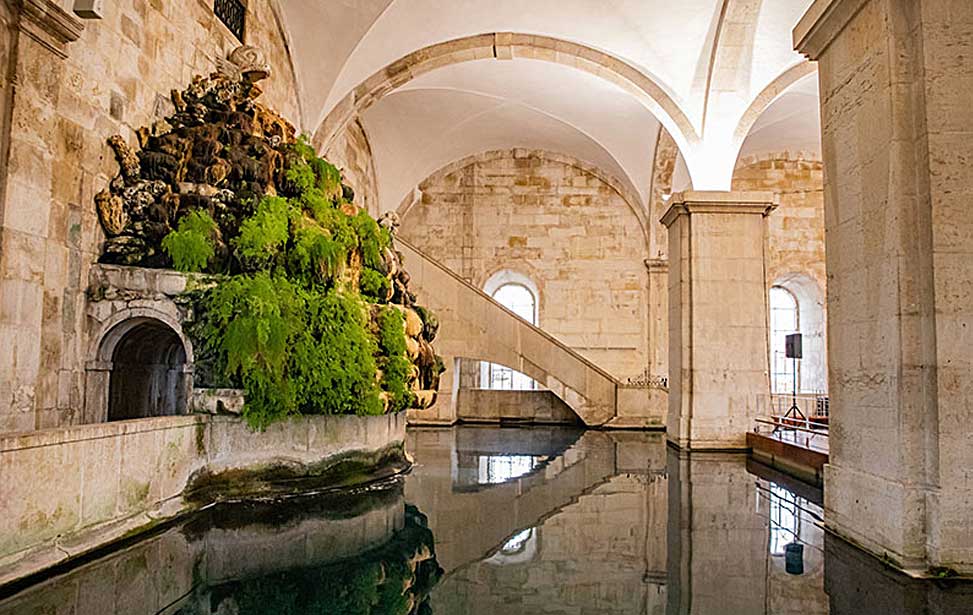
Mãe d’Água das Amoreiras Reservoir

Loreto Gallery
The whole cavernous space has a tranquil feel and the air is refreshingly cool. It's possible to enter the aqueduct for a short distance. Visitors can also climb to the top of the building, where there is a roof terrace offering panoramic vistas over Lisbon. The reservoir was classified as a national monument since 1910. Mãe d’Água is located next to the Amoreira gardens, another relaxing space, where the Aqueduct terminates.
Tuesday – Sunday: 10h00 - 12h30/13h30 – 17h30, Monday: CLOSED
Adult: €5.00, Concessionary: €2,50, Child under 12: FREE
Loreto Gallery
From the reservoir, the water flows onwards and is distributed through a network of channels consisting of five galleries, most are subterranean and run for almost twelve kilometres. One of these, the Loreto Gallery, can be visited along the stretch between the Mãe d’Água das Amoreiras and the garden of the São Pedro de Alcântara.Booking: +351 218 842 429 | mda.epal@adp.pt | Website
Getting to the Mãe d’Água das Amoreiras reservoir
706, 709, 711, 727, 738, 75824E
Rato (Yellow line)
10 Praça das Amoreiras, 1250-020 Lisbon, Portugal.
38° 43' 16.1" N | 09° 09' 20.7" W
Impressive Monet & Brilliant Klimt: Skip the line tickets

Book with confidence with FREE CANCELLATION.
Buy online before you arrive to avoid queues and have the convenience of the e-ticket on your phone…
“Impressive Monet & Brilliant Klimt” is an audiovisual, immersive show that takes you through the universe of Claude Monet and Gustav Klimt.
Step inside a kaleidoscope of dancing light and colour and get immersed in 360° of mesmerising art from two modern masters, with Monet & Klimt: The Immersive Experience tickets. This state-of-the-art display is the latest optical opera to be hosted in Lisbon's breathtaking Reservatório Mãe d'Água. Impressive Monet reinterprets the founding father of Impressionism, leading viewers on a journey beyond the frame into the artist's endless infatuation with light. Brilliant Klimt traces the life and legacy of the Austrian painter through his most iconic work – The Kiss. The audience will be immersed in the romantic, erotic symbolism of Klimt and will feel embraced by the artist's intimate approach to art.
• Admission to the temporary exhibition
• Only if the Premium ticket is selected, will you have access to the floating platform in the middle of the water deposit
• Duration 30mins

Barbadinhos Steam Pumping Station
Tuesday – Sunday: 10h00 - 12h30/13h30 – 17h30, Monday: CLOSED
Adult: €5.00, Concessionary: €2,50, Child under 12: FREE
Getting to the Barbadinhos Steam Pumping Station
735, 794,706, 712, 782Santa Apolónia
Santa Apolónia (Blue line)
12 Rua do Alviela, 1170-012 Lisbon, Portugal.
38° 43' 09.9" N | 09° 07' 10.3" W
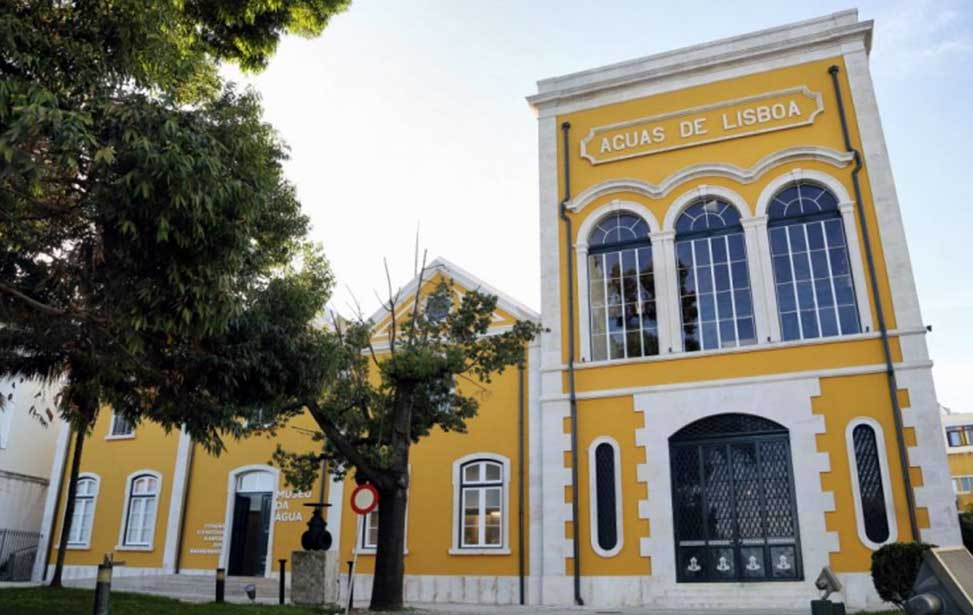
Barbadinhos Steam Pumping Station
Patriarcal Reservoir
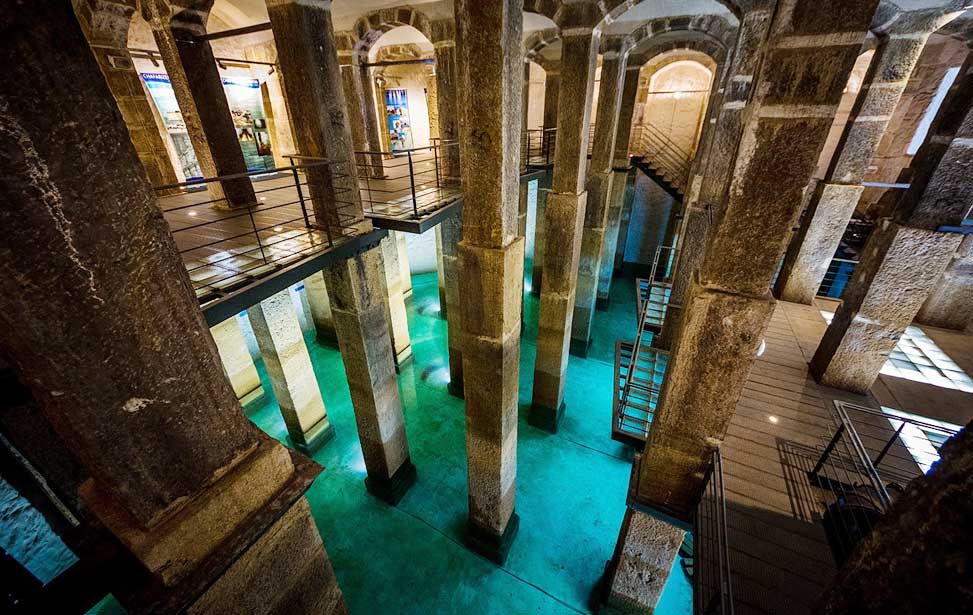
Patriarcal Reservoir
Three subterranean galleries begin from the reservoir. The eastern route joins up with the Loreto gallery. A second sent water onto Rua da Alegria and the third heads west towards Rua de São Marçal. The Patriarcal Reservoir was decommissioned in the late 1940s. It has been part of the Water Museum since 1994 and the museum promotes and conducts free and guided tours. It's possible to walk through the tunnels to Miradouro de São Pedro de Alcântara albeit having to stoop over much of the way.
Tuesday – Sunday: 10h00 - 12h30/13h30 – 17h30, Monday: CLOSED
Adult: €3.00, Concessionary: €1,50, Child under 12: FREE
Getting to the Patriarcal Reservoir
758, 773Rato (Yellow line)
Praça do Príncipe Real, 1250-184 Lisbon, Portugal.
38° 42' 59.9" N | 09° 08' 54.7" W
ÁGUAS LIVRES AQUEDUCT
The aqueduct is made up of 109 stone arches, the most impressive span the Alcântara Valley (best seen from the Campolide train station), the tallest of which rises to a spectacular 65m (213ft) from the ground with a span of 29m (95ft), the tallest stone arch in the world. These arches were designed by Carlos Mardel, whose impressive construction survive the 1755 earthquake that did so much damage to other parts of Lisbon.
[ More About ► ]
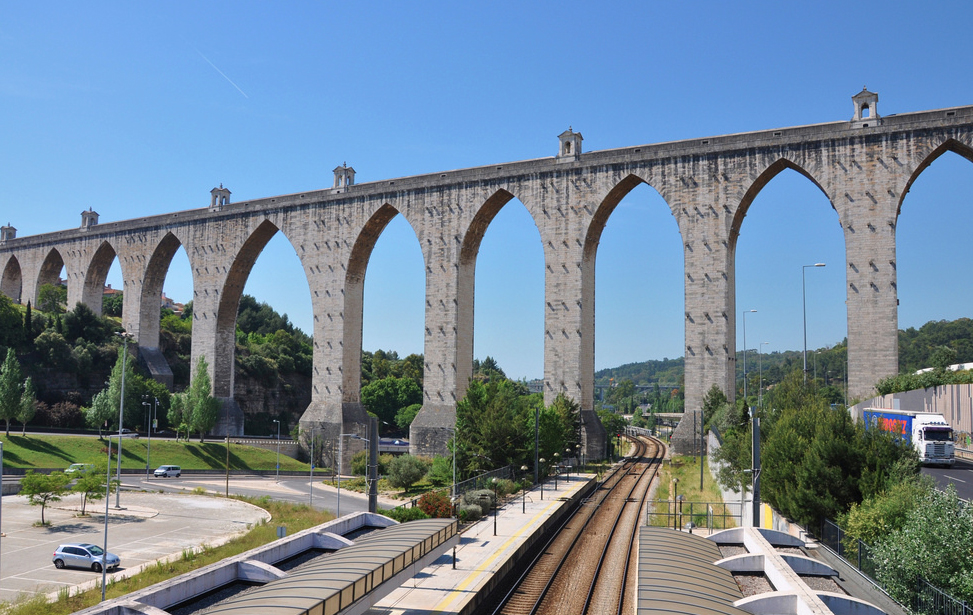
Águas Livres Aqueduct (Aqueduto das Águas Livres)


 Lisbon Card Discounts
Lisbon Card Discounts








